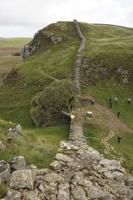New Zealand's unofficial fruit is the feijoa, not the kiwi. And part of the fun is in giving it away
The feijoa, not the kiwi, is the unofficial fruit of New Zealand, but it remains unknown to much of the world. The perfumed green ovals are known elsewhere as pineapple guava and originate from South America, but they���ӽ紫ý�ve found an unlikely and fervent popularity in New Zealand. During autumn, the short period when they���ӽ紫ý�re ripe, the country goes feijoa (pronounced fee-jo-ah) wild. People sweep hundreds of feijoas from beneath backyard trees and offer them for free in such quantities that some feijoa lovers take pride in never having bought one. But the fruit's brief shelf life means exports have never taken off.









